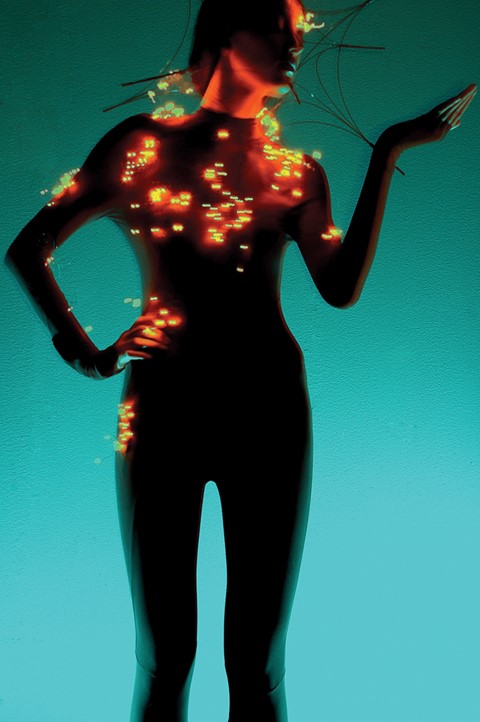Sustainable Culture considers the future and potential impact of wearable tech
We are in constant flux as technology moves from stationary to mobile to wearable (and eventually to biological). Hints of wearables are popping up all around us, enthusiastically fed by commercial endeavours like Fitbit, Nike+ Fuelband and other health gadgetry, plus gizmos like Google Glass – a healthy selection of tools hyped to bring new levels of optimisation to our lives. These technologies are becoming incognito additions to our day-to-day existence, promising better eating habits, enhanced experiences, weight management and more, data-fying our every move – even monitoring us as we sleep.
The Quantified Self movement has championed tracking every part of your behavioral and emotional experience, based on the assumption that data is knowledge and once we know and understand our habits, we can optimise our lives. Quantified Self has brought wearable tech a long way, but wearables have started to mature out of this geekier domain towards total integration into our garments and even the skin itself. The recent move by tech companies to hire stars of the fashion world has created yelps of excitement about fashion, tech and luxury all melting into one pot of amazingness. Our body no longer need be adorned purely with practical gadgetry based on 90s sci-fi films; the fashion-savvy influence will ensure the microchip-laden materials seamlessly frame the human form. Embedding aesthetic value in these new tools ensures more people are likely to adopt them and large scale social impact becomes less of a dream.
"The recent move by tech companies to hire stars of the fashion world has created yelps of excitement about fashion, tech and luxury all melting into one pot of amazingness"
As these great creations emerge and tools augment our lives, we need to reflect on the future: do we want to live out these sci-fi visions? Will the lasting cultural impact be increased connectedness and stronger human bonds or is the 'self' the sole focus leaving isolation and paranoia in its wake? Someone who is exploring these potential futures is Anab Jain, Director of Superflux – a collaborative design agency. "I'm hesitant about certain wearables, like Google Glass, my main concern is what it's recording of the people around me, rather than what I'm recording and sharing with my friends because they are being recorded without any sort of consent. It's not like lifting your camera, it's a completely different experience."
Jain is one of 60 speakers at the Wearable Futures conference this week at Ravensbourne College where they will be opening up the discussion of embedding wearables into our culture. The conference will explore wearable technologies through futurists, fashion designers, entrepreneurs, makers, chemical engineers, textile designers – a wild amalgamation of perspectives on visions of our tangible future.
The conference is just the beginning of an ongoing conversation, the next stage being the Futures 10 exhibition which Jain is also part of. "We are creating a badge that will scan digital messages you send (emails, texts etc) and broadcast the bits of the message that the NSA (National Security Agency) and GCHQ (Government Communications Headquarters) are scanning for already. So we are basically sharing what they secretly want to see from us, hence questioning the whole premise of surveillance." Jain explains, "We are constantly measuring and collecting, what if some of that data starts getting broadcast? How would that change our relationship to each other in a public space, to what we are wearing and what we are sharing?"
View the Wearable Futures events live here on 10th-11th December.
Text by Abby Schlageter
